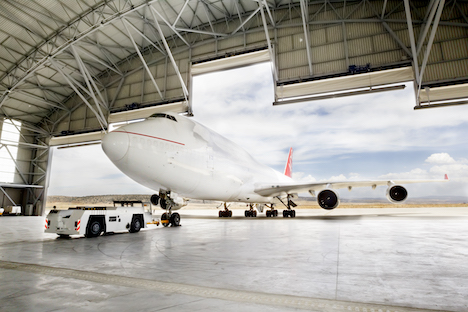GPS Repeating Explained
GPS Repeaters
The increasing popularity of GNSS – Global Navigation Satellite System (GPS, Glonass, Galileo, Compass, Beidou-2, IRNSS) terminals, systems and services has generated new applications and given rise to expectations that these devices would be able to operate indoors as well. Take a moment to watch the video to learn how GPS Repeaters work.
Typical Use Cases

Aircraft Hangars
Within the aviation industry, installing GNSS repeater systems in hangars can amount to huge savings when you no longer must tow the planes out of the hangar for avionics or navigational equipment testing & calibration, troubleshooting, and repair. You will also increase general safety as you can perform all aircraft service in a dry and clean indoor environment rather than outside where weather can become a factor. No more satellite acquisition delays for military planes scrambling out of the hangar in a hurry.

Public Safety
Operators of public safety vehicles including fire engines, emergency medical vehicles, and police cars often equip their vehicles with equipment that relies on having a live GNSS signal. When these vehicles move into a parking garage or fire station these vehicles typically lose this satellite signal. By installing GNSS repeater systems in the garage or fire station, you can ensure that all vehicles always receive a live signal, and do not experience any delay with acquiring the signal when leaving the station. Police officers and other Public Safety personnel using portable radios with GPS positioning will benefit from immediate acquisition of signal when leaving buildings equipped with indoor GNSS signal coverage.

Service Shops
Service shops and maintenance depots can avoid having to move heavy equipment or vehicles outside for testing, calibrating, or maintaining the vehicle’s navigation devices. By installing a GNSS repeater system, mechanics can perform all their work inside the shop, avoiding costly towing back and forth. This also reduces heating & air conditioning costs as you can keep the bay doors closed.

Demo Showrooms
For retailers making GNSS enabled devices, having a reliable indoor satellite signal is beneficial when demonstrating features. For example, if there is no signal available, the demonstration of the product’s latest features based on GNSS in a new car becomes challenging if not impossible. A GNSS repeater providing inside coverage will allow customers to compare different devices using “live” satellite signals as if outdoors.

Assembly Lines & Manufacturing
Manufacturing plants and assembly lines that produce equipment with embedded GNSS receivers can test, calibrate, and troubleshoot the GNSS device directly at the production line by installing GNSS repeaters inside the plant to save time and money. No need to bring equipment outside for test and calibration.

Testing & Laboratories
When you have a need to test any equipment relying on GNSS timing or location indoors, the lack of reliable satellite signal typically becomes an obstacle. By installing a GNSS repeater solution, you can relax knowing your personnel will have an excellent satellite signal in the lab or testing facility resulting in improved workflow and ROI.
